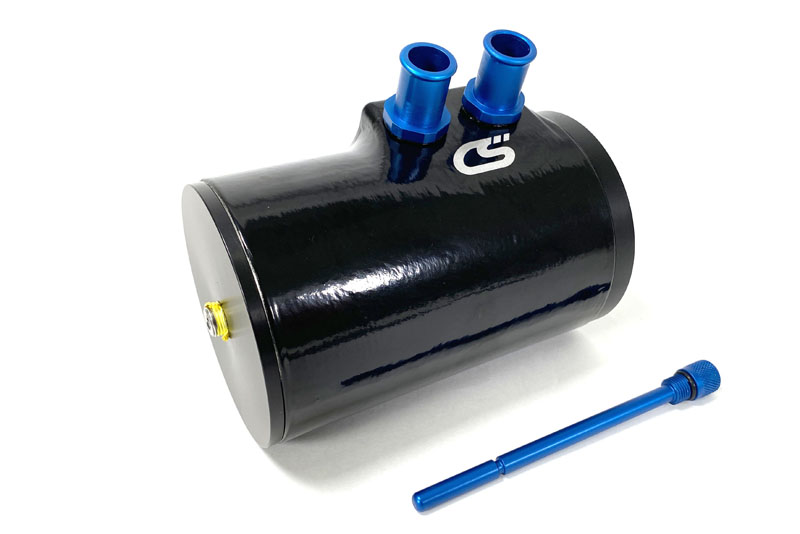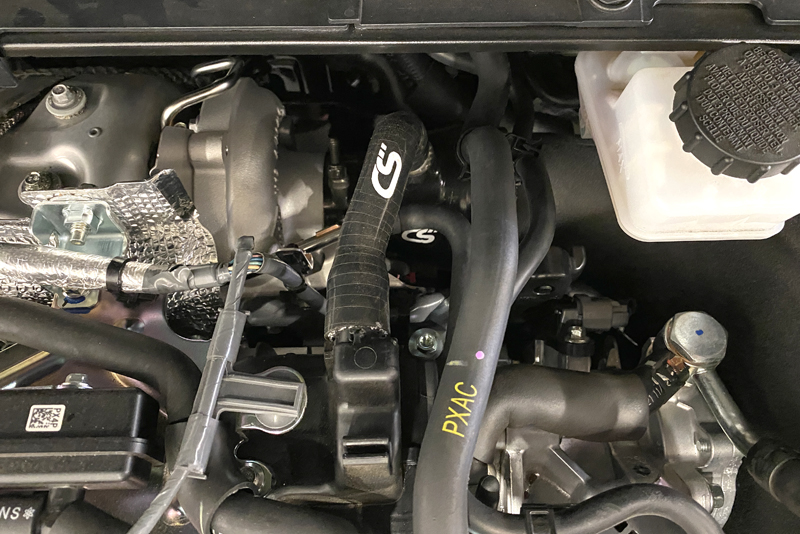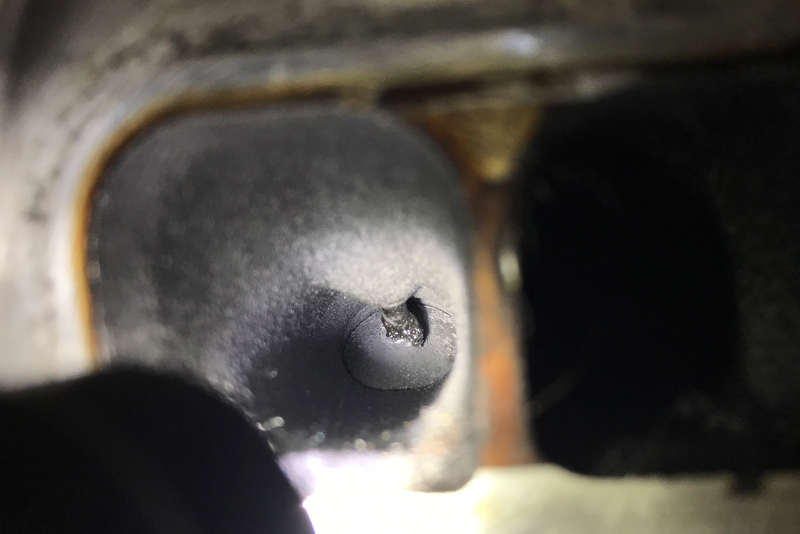Let’s talk Oil Catch Cans! While not the most exciting performance part for your turbo Mazda 3; when properly applied they can be a keystone to improving the health and longevity of your engine’s life. With that being said, they are worth a discussion in more detail about why an oil catch can (OCC) is needed and what the benefits are. As with any performance modification, there are many different ways to achieve the end goal, but not all are created equal.
Let’s break down the CorkSport Oil Catch Can system so you can learn and understand why we utilize an OCC the way we do. While we did break this down a bit back in 2019 here, we want to take it a step further now.

Improving the System
First, let’s provide you with some context. What is the system on the car/engine that the OCC Kit is working to improve? All modern engines utilize a Pressure Control Ventilation (PCV) system to regulate and control the internal pressure of the crankcase. This is not to be confused with the pressure inside the combustion chamber.

As you can see in the image above, there are two major components of the PCV system on the engine. Typically there is a breather vent integrated into the valve cover that will vent/route directly into the intake system. On turbocharged engines this vents upstream of the turbocharger compressor inlet.
Here you can see this connection with the CorkSport Turbo Inlet Pipe.

The second part is a “cover” on the front side of the engine block typically hidden under the intake manifold. This cover has built-in baffles/chambers and a PCV valve. The PCV valve is a basic one-way check valve that allows pressure to flow out of the engine crankcase and into the intake manifold directly.
Left Side: Here is an example of a SkyActiv-G 2.5L PCV Cover with the PCV Valve at the top.
Right Side: Here is an example of the baffling on the engine block inside the PCV Cover.

The Goal
So what’s the point/goal of the PCV system? Two main reasons:
- Reducing the pressure buildup inside the engine crankcase. This improves the durability/longevity of the engine and improves engine efficiency.
- Emissions control. The pressure buildup inside the crankcase comes from the combustion process in the cylinders. The rings on the pistons do not have a perfect seal, thus some combustion gasses and fuel are able to push past the piston rings and into the crankcase. This is called “blow by”. This blow by and fuel getting past the piston rings worsens during cold start and eventually results in dilution of the engine oil due to the excess fuel.
We invite you to check out the Engineering Explained video about this specific topic. He does a great job explaining and showing this exact system and issues with it. https://youtu.be/uVd-ZS5bnyY?t=337
Here you can see the captured fuel and water vapors of a CorkSport OCC installed for ~3000 miles on a 2018 Mazda 6 2.5T. This engine only had 500 miles at the time and had an average commute of 15 miles & 20 minutes of mixed traffic and speeds.

Had there not been an OCC installed, this vapor would have been directly ingested into the intake system at the turbo compressor inlet and the intake manifold. Over enough time, this builds up on the surfaces of the intake system, turbocharger, intercooler system and intake valves…diminishing performance and fuel economy.
Sadly, while Gasoline Direct Injection (GDI) technology has provided some exceptional improvements in power and fuel economy, there are still negatives to the overall system. Dirty intake valves and fuel dilution are the main concerns.
Here is an example of direct intake valves…

Now let’s talk about what makes the CorkSport OCC System unique vs the current options available.
- It’s a complete system, not a half system. Meaning the CorkSport OCC incorporates the valve cover breather AND the PCV cover on the front of the block.
- Dual Chamber Design: this separates the incoming vapor from the valve cover and PCV cover to the lower chamber to condense and be drained later. The air then passes through a baffle to the upper chamber and then exits to the intake system.
- Constant Vacuum: Due to the design, the CS OCC has a constant vacuum pulling pressure and vapor from the crankcase. This is important to note because with the OEM system, the PCV Cover and valve close while in boost…which is when most blow by is happening. With the CS design, you are pulling more vacuum through the OCC while in boost.
- Low Mounting: While this seems trivial it’s important from a physics standpoint. The fuel in the oil turns into vapor once the engine and oil are up to temperature. Then the OCC can draw the vapor out of the engine. Once this happens the vapor will start to condense back into a liquid; most of it will make it to the OCC itself but some will condense in the hose. We want the hose to drain into the OCC, not the engine.

Here you can see the general routing of the CorkSport oil catch can over a CX50 engine bay (routing is the same for all turbo 2.5L SkyG models). The red lines are the routing from the valve cover breather and the PCV. They “T” together and then enter the lower chamber of the OCC. The blue line is the clean air exiting the OCC and being drawn into the intake system just before the turbo compressor inlet.
Let’s wrap this up! GDI Tech is great but has some issues. In factory form, the OEM PCV system works but could be better…enter the CorkSport Oil Catch Can Kit.

By changing the routing and adding a proper tank to catch the oil, fuel, water vapors that collect inside the engine you are effectively helping your engine breathe better. Reducing the amount of particulates and vapor entering the intake system reduces the overall build-up on the intake valves and other various components.
With the optional drain valve system, you can easily service the OCC when you perform you regular oil changes. While not sexy, it is essential and your Mazda will love you for it.
We hope you have enjoyed this tech blog and we hope it has helped you learn more about your beloved Mazda. Check out the Oil Catch Can for more details and to get yours today!
-Barett @ CS
Connect with us
You may also like
- Oil Catch Can Kit for 2016+ SkyActiv Turbo 2.5L
- Servicing Your CorkSport Oil Catch Can for Winter
- It’s Finally Here! The Performance Turbo Inlet Pipe for the Mazda SkyActiv-G 2.5L Turbo



So for those of us with a supercharged Mazda, would any of the routing need to change?
Also, are there any other differences in the OCC kit for the NA and turbo versions besides a hose barb, intake manifold cap, and additional hose? Is the can the same?